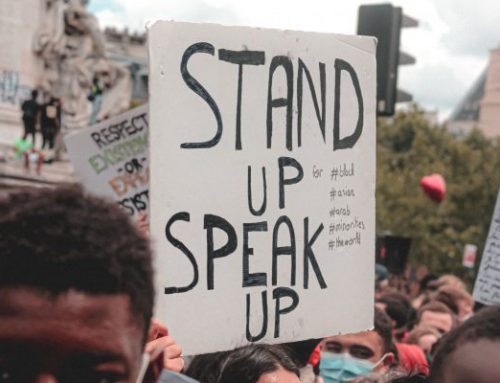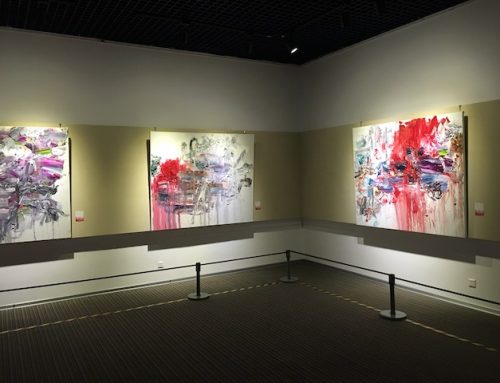In one of the most-watched TED presentations ever delivered, the late Sir Ken Robinson makes an astonishing claim: that education systems essentially crush creativity.
Robinson’s claims revolve around the idea that education systems regiment, homogenise, and order education that rewards students for producing materials that are standardised and punished for anything creative.
While there are many who have disputed Robinson’s claims – see for example Scott Goodman’s detailed rebuttal – there are at least two important points that we should glean from Robinson’s arguments.
The first is that education systems too often separate disciplinary areas into neat divisions. The most obvious of these is the clear divide between the ‘arts and social sciences’ and the ‘hard sciences’ of STEM (Science, Technology, Engineering, and Mathematics).
Students are encouraged to focus on one or the other: if they are talented in mathematics, there is a tendency to place them in a hard science stream. In contrast, those with an artistic flair or who have a love of the art world are nudged towards the creative fields.
The second important point from Ken Robinson is that as a student journeys through the education system, they tend to learn a ‘code’ by which to progress. One example within a university setting is that students quickly learn what is expected from a ‘standard essay’.
This happens through repetition: in Australia, an average of eight subjects a year for a three-year degree includes at least two essays per subject – that is, 48 essays.
In such an environment, a student quickly learns what is expected and reproduces this over and over again. There is no doubt that their skills improve: they become better researchers, writers and more advanced in their application of theory.
What they do not gain, however, are more entrepreneurial insights to produce different or creative works, be brave in what they do or try something different.
It is here that Robinson is correct: through repetition and neat division, creativity suffers.
Confronting disciplinary divides
History is filled with those that have crossed this false divide between arts and science. We need to look no further than Leonardo da Vinci who was driven by a passionate curiosity to study a cross-section of scientific fields (such as human anatomy, engineering, astronomy) while producing some of the Western canon’s most iconic works including the Mona Lisa (1503–19) and The Last Supper (1495–98).
There is also Santiago Ramón y Cajal, often referred to as the ‘father’ of contemporary neuroscience who was awarded a Nobel Prize in 1906 (shared with Camillo Golgi) for work on the nervous system and whose ink drawings continue to capture the attention of the artistic world.
More contemporary artists such as Anicka Yi use art to explore the reaction of our senses at the intersection of fragrance, cuisine, and science. In his 2016 book, The Jazz of Physics: The Secret Link Between Music and the Structure of the Universe, Brown University physics Professor Stephon Alexander uses music to shed light on some of the deepest mysteries in cosmology.
Interdisciplinarity
There is little doubt that we as researchers and educators need a disciplinary home to allow us to understand the very foundations of our work. Such a home means we know what journals to read and conferences to attend to keep in touch with developments and ensure our work does not become stale.
Just as education at its best makes our students are a little ‘uncomfortable’ and can create a sense of dissonance, so should we be prepared to challenge ourselves to move beyond our disciplinary homes.
It was from this perspective that I worked with a cross-section of colleagues from several universities to challenge each other in designing and establishing programs.
The first example is The Academy at Western Sydney University. The Academy at Western Sydney is best thought of as the equivalent of an American university ‘Honours College.’
It was established as part of a pedagogical drive to introduce the ‘citizen scholar’ program into the undergraduate curriculum: that is, to ensure our graduates are not only world-class scholars, but also have the skills and attributes to be engaged and empowered citizens of their communities.
Designing the program brought together a cross-section of stakeholders (including current students, alumni, business leaders, members of the armed services, and community-based organisations) as well as faculty from across the disciplines (including law, medicine, the arts, and astronomy).
While the program itself has been highly successful for our students – winning a number of education excellence awards – it was the impact on the faculty that was just as profound.
As faculty, we attended both art appreciation courses (including at Sydney’s Museum of Contemporary Art) as well as time in ‘hard science’ based labs. This challenged us to reflect on our own limitations and boundaries and encouraged us to look elsewhere for inspiration.
On my own journey, I have combined my research as a cultural theorist with that of Professor Andrew Francis (a mathematician) and Professor Oliver Obst (a computer scientist) to delve into the world of data politics and data ethics.
This article was originally published by Open Forum.






Leave A Comment